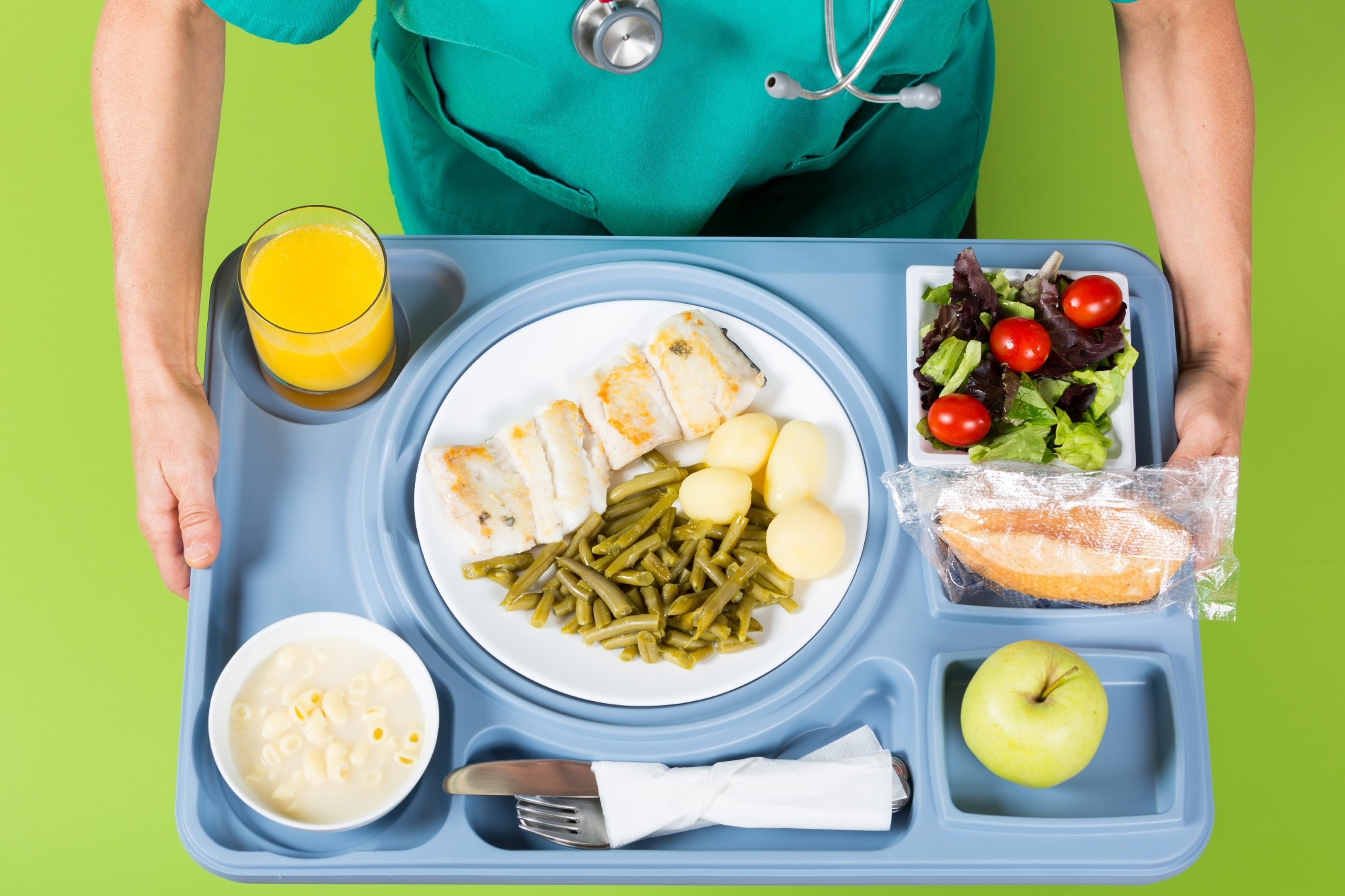A UK study reveals that simply reordering hospital meal options, without changing recipes, may deliver significant health and climate gains.
 Study: Strategic menu optimization could reduce carbon emissions and saturated fat consumption: a simulation modelling study of UK hospital inpatient meals. Image credit: 135pixels/Shutterstock.com
Study: Strategic menu optimization could reduce carbon emissions and saturated fat consumption: a simulation modelling study of UK hospital inpatient meals. Image credit: 135pixels/Shutterstock.com
A recent study in Philosophical Transactions of the Royal Society of B: Biological Sciences examined the impact of strategic menu optimization on saturated fat consumption and carbon emissions in an inpatient environment. The study used simulation to predict whether strategic menu swaps in a hospital inpatient setting could reduce carbon emissions and saturated fatty acid (SFA) intake.
Strategic menu interventions and environmental impacts
Efforts to change food consumption behavior via legislation may not last permanently, despite some studies showing that they promote environmentally sustainable and healthy food choices. Moreover, in specific settings (e.g., hospitals), traditional interventions may not be practical or appropriate, as patients are more concerned with enjoying food than its sustainability.
One study under the Transforming UK Food Systems (TUKFS) Programme noted reductions in carbon footprint and SFA intake of about 31% and 6%, respectively, by strategically designing menus in a university hall of residence. This suggests that there could be benefits across other sectors beyond a university setting.
In the UK, 42% of workers report eating in a canteen. Diners' menu choices affect nutritional and environmental outcomes, depending on both the menu options selected and those not selected. Competition between menu items matters, and by altering the choice architecture, one can influence the frequency of selection of each dish and thereby influence target outcome variables (e.g., carbon footprint).
About this study
The primary objectives of this study were to investigate the feasibility of modeling hospital data and to determine the expected level of predicted reductions. Researchers convenience-sampled NHS hospitals across the 12 UK regions that made their weekly inpatient dining menus publicly available. The focus was on weekday menus (H01-H12) serving the day's main meal. Since hospitals did not publish recipe-level data, the carbon footprint and SFA content were calculated using ingredient lists from BBC Good Food recipes and the Klimato tool.
All dishes served at a mealtime on weekdays were extracted, with the first three dishes available daily across all sites making up a baseline dataset. Furthermore, food preference data from 50 online survey participants recruited via Prolific and matched by region were collected for each hospital because food choices can differ across individuals and areas. The optimizing approach generated a single menu that minimized carbon footprint and SFA intake across 50 people across 5 days of the week, rather than at an individual level.
The weekly menu, i.e., five groups of three dishes, formed a total of 1,401,400 unique combinations, which was reduced to 113,400 after applying a requirement that at least one vegetarian dish be offered daily. Across these combinations, for each participant, identification was done for the five dishes that they would most likely choose in a week.
These results were then combined, for each site, to compute the average weekly SFA consumption for all participants and the carbon footprint. The differences in predicted weekly SFAs and carbon footprints were computed relative to the baseline to calculate the efficacy of strategic menu design.
Study findings
The menu optimization was suitable for 11 out of 12 hospitals. One site had to be dropped from the analysis because it offered only six unique dishes across the week, greatly limiting the number of unique menu combinations. For the remaining sites, while targeting a reduction in carbon footprint as the sole objective, a predicted reduction of 12.7–29.3% was achieved. The corresponding reductions for SFA consumption were between 6.5% and 31.5%. The results were broadly similar for carbon footprint and SFA intake when they were minimized jointly, i.e., 9.1 to 29.3% and 5.0 to 26.5%, respectively.
There was considerable variation across hospital sites in the potential for reductions, with some menus showing much greater opportunities to cut carbon emissions and saturated fat than others. The size of the reduction mainly depended on the range of variation in targeted variables across menu combinations, and on how the baseline menu compared with the optimized menu.
Conclusions
In sum, simulation modelling showed that strategic menu swapping has the potential to reduce SFA consumption and food carbon footprint. The main strength of this approach is that it can be simultaneously applied with other strategies based on reformulation. Additionally, hospitals could choose other variables to minimize, such as sugar or salt consumption, or maximize variables like fibre intake. Finally, since no meal needs to be removed from the menu, caterers do not have to change their recipes.
The key limitation of the current study is that the hospital selection might not have been representative, as only those hospitals were chosen that made their menus publicly available. Furthermore, the participant sample recruited was younger on average than typical hospital inpatients. The modelling strategy failed to consider side dishes (e.g., mashed potatoes) and special dishes (e.g., gluten-free).
The authors emphasized that these are early-stage estimates, and real-world implementation is premature until further trials are conducted. Practical challenges such as logistics, costs, and stakeholder acceptance must be addressed before wider rollout.
Download your PDF copy now!